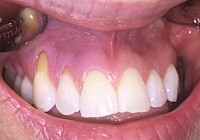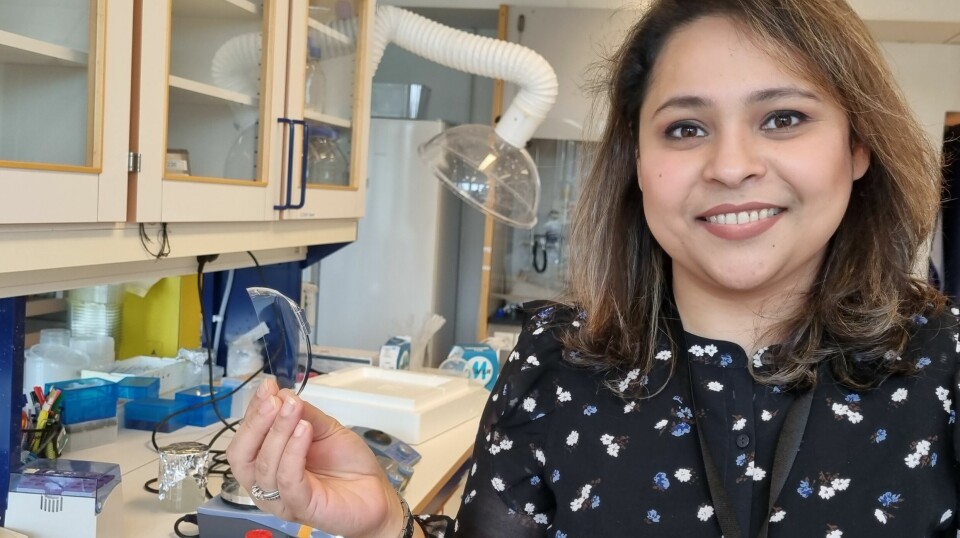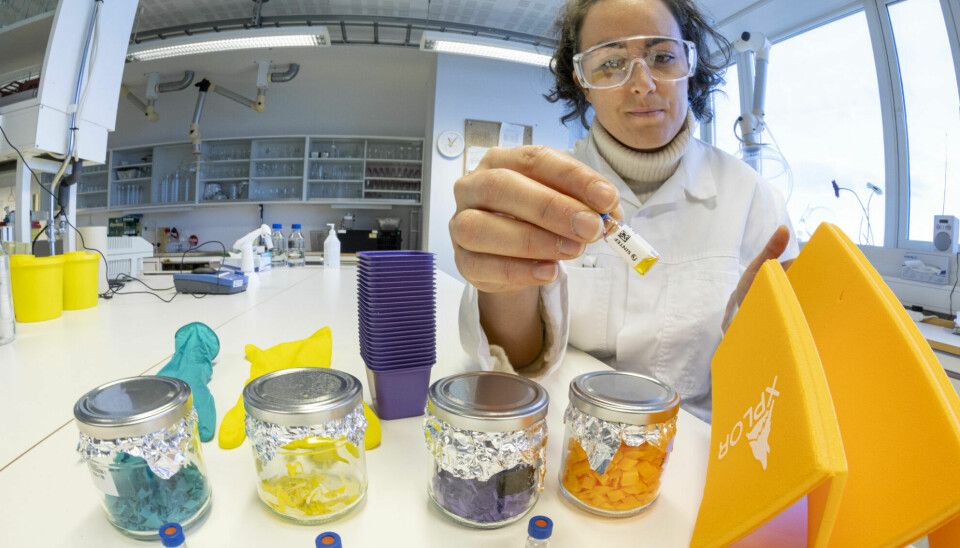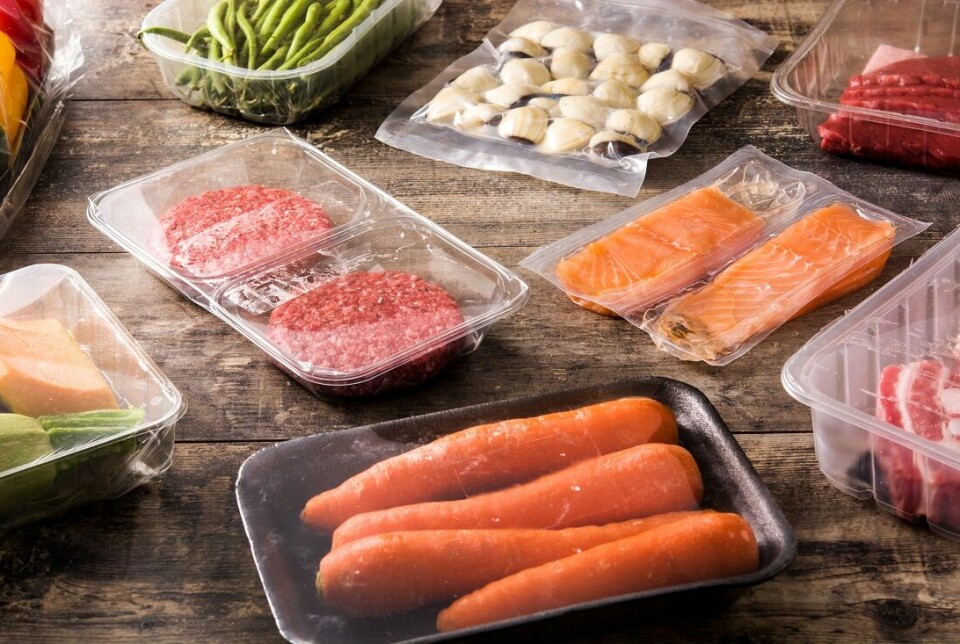
Harmful substances have been found in plastic food packaging – but do we ingest them?
Researchers have found plastic packaging to not be safe enough. The research institute Nofima has carried out tests showing that the packaging is completely safe. So, who’s right?
Plastic food packaging needs to become safer, according to a research group from the Norwegian University of Science and Technology (NTNU).
The researchers tested the plastic packaging of several food products, including sausages, blueberries, cheese, and yoghurt from five countries – the USA, Germany, South Korea, the UK, and Norway.
They found thousands of chemicals – some known, many unknown, and several harmful. The harmful chemicals can affect our hormones and metabolism, according to the researchers in their recently published study.
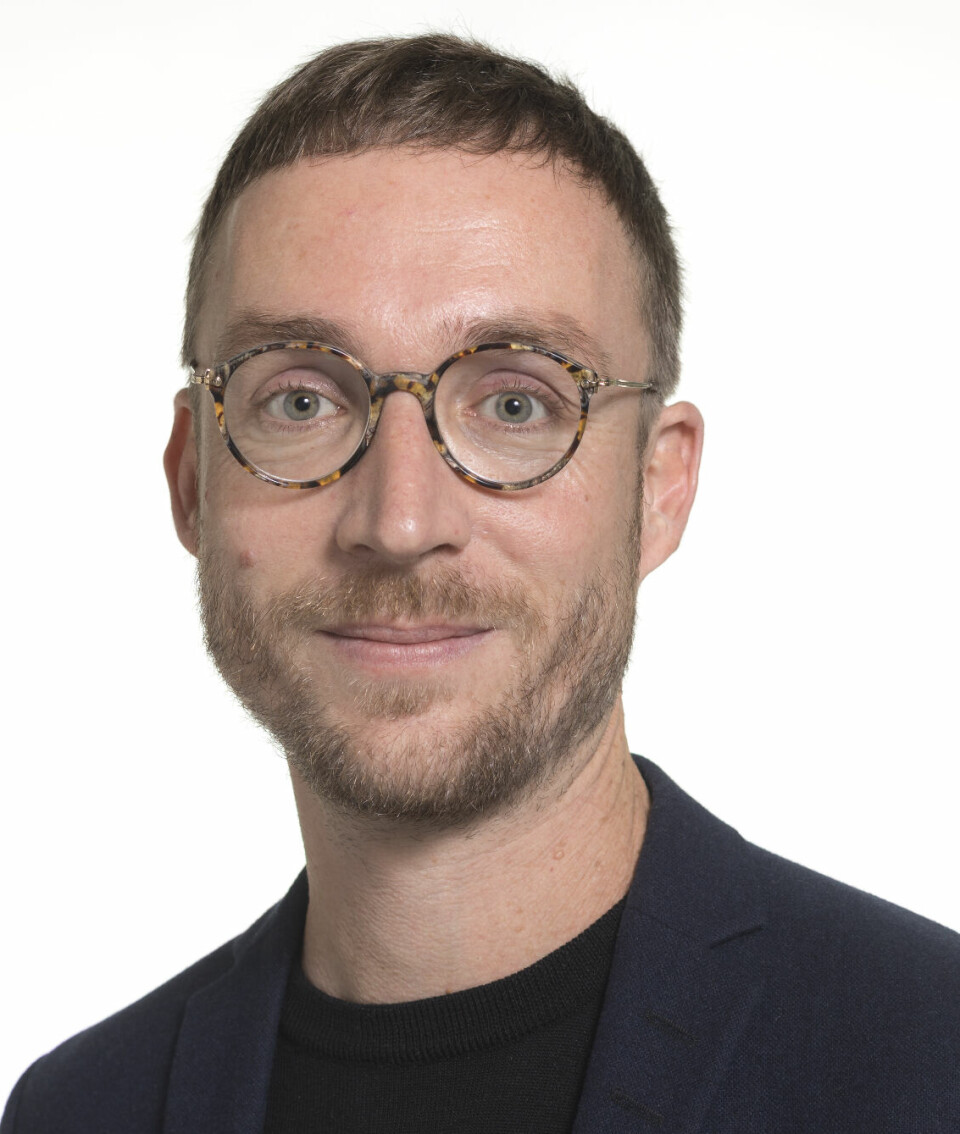
“People usually think that plastics are tested and safe when they’re used for food packaging, but the science doesn’t necessarily support this,” says Martin Wagner. He is a professor at NTNU and one of the researchers behind the new plastic study.
Plastic with fewest chemicals possible is safest
The researchers found that the various products had unique chemical 'fingerprints'. One of the products had a whopping 9,936 different chemicals in it.
Products containing fewer chemicals also had fewer harmful substances. Creating plastic using as few added chemicals as possible is an important step towards making safer plastic packaging, the researchers write.
At the same time, the study shows how limited our knowledge of plastic and chemicals actually is, they write.
Wagner is also one of the researchers behind the recently published PlastChem Report, a large survey of chemicals used in plastic production. The researchers found a total of 16,000 chemicals. A quarter of them are potentially harmful, says Wagner.
“We lack safety information for 10,000 of these substances. This clearly shows the huge lack of knowledge out there. There are thousands of chemicals that we know nothing about,” he says.
Plastic likely leach toxins
“I don't mean to scare people,” the plastic professor insists. “But when we look at plastic from a public health perspective, these chemicals have a major impact.”
Wagner points to a new study from the USA that estimates chemicals in plastic like bisphenol, PFAS, and phthalates cost the American healthcare system 250 billion dollars a year.
A study from the Norwegian Institute of Public Health (NIPH) found last year that Norwegian children had higher levels of bisphenol and PFAS in their blood than is considered safe.
The new study of food packaging did not investigate whether the chemicals they found actually get into the food we eat.
But Wagner believes it is likely and refers to a previous study in which he and colleagues found that plastic products leached chemicals into water.
“That study shows us that many more chemicals than we first thought actually leach into the water,” says Wagner.
“Water is a mild solvent, and when something leaches into water, it seems reasonable to believe that it can also leach into beverages, foods containing a lot of water, and fatty foods like cheese and butter."
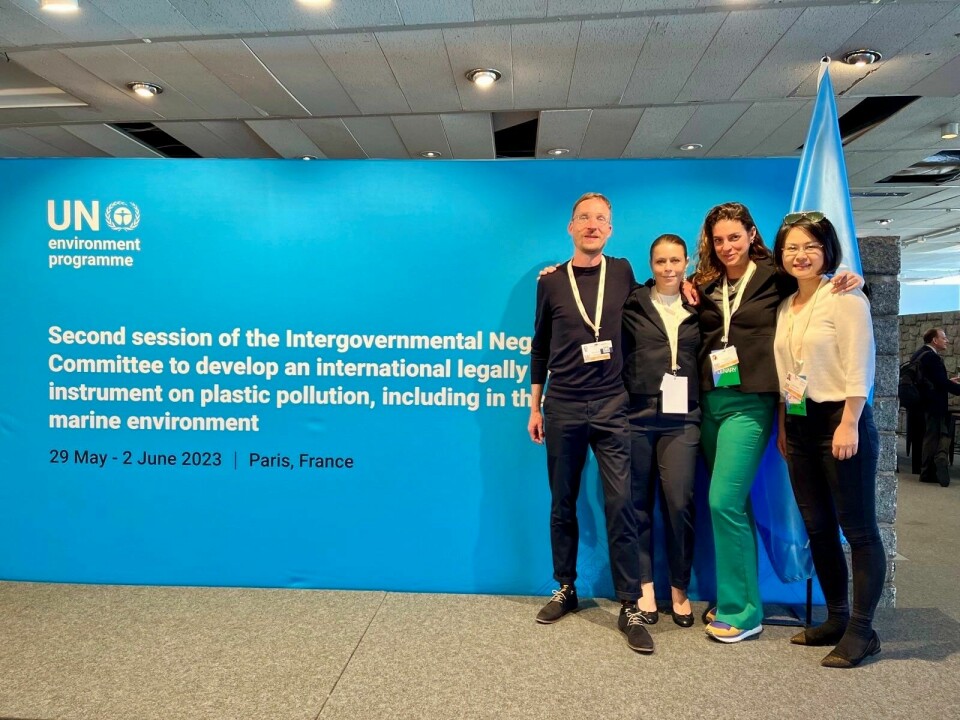
Important study
Dorte Herzke is a researcher at NIPH's Department of Food Safety. As an analytical chemist, she has worked for over 15 years on how plastic and microplastics spread in the environment and are taken up by animals and humans.
Herzke believes the study by Wagner and his colleagues is a solid and important study.
“It’s helpful to be able show so clearly that a number of chemicals in plastics can trigger possible unwanted effects,” the plastics researcher says.
“But what we still don't know is if and how much of the chemicals leach into the food."
Herzke explains that the researchers used a strong solvent to extract the chemicals from the plastic.
“It’s not the same situation as what happens when food comes into contact with plastic,” she says.
Everything we don't know
Herzke believes that plastic packaging practices that comply with Norwegian laws and guidelines are probably safe.
At the same time, there is a lot we do not know.
“We know that plastic contains hundreds more substances than just the ones that are regulated. Many of them haven’t been identified. We can identify some of them, but we don't know why they’re in the plastic material. They might not even be added intentionally,” says Herzke.
“Lots of different chemicals arise when plastic is produced that we don’t have any control or oversight over. Uncontrollable things can happen that not even the manufacturer who makes the plastic knows about.”
Substances that we are not aware of are of course not regulated.
Some such substances may have been captured in the study that Wagner and his colleagues did, Herzke says.
“The researchers identified a whole lot of chemicals. The identity of many of these are still unresolved. But the findings give an indication of how many different substances plastic can contain.”
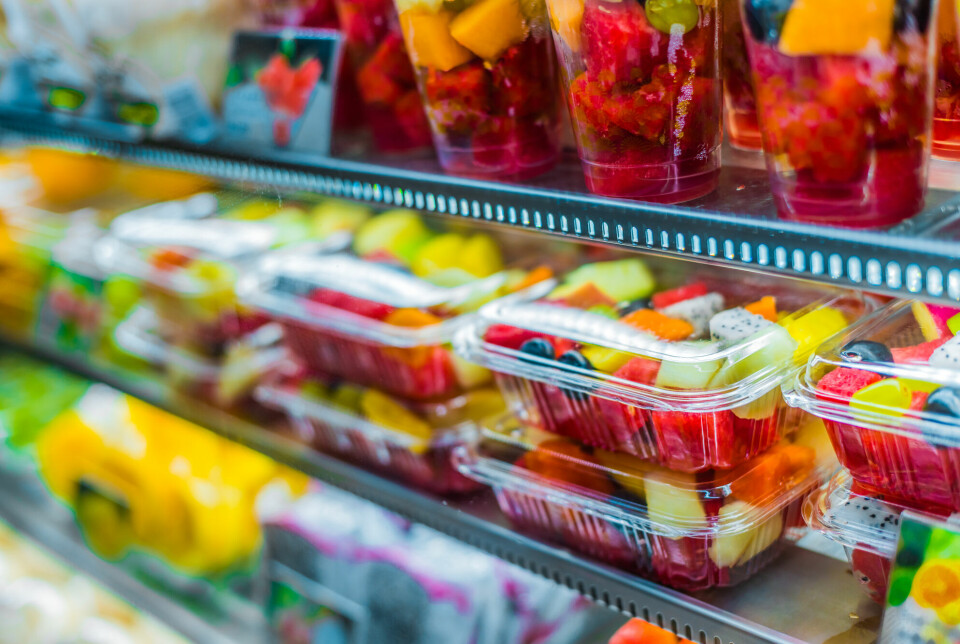
Are we ingesting all these chemicals, then?
“We know that the chemicals we’re aware of being used in food packaging don’t migrate or migrate only to a small extent,” says Herzke.
“What we don't know is how the substances that we’re not aware of behave. We can't test them, so we don't know if they behave like the others."
The study showing that chemicals leached into water does not mean that the same thing happens when they come into contact with food, according to Herzke.
“Not all food is like water. If you have some food that is very rich in water and is in direct contact with the plastic, it might be fair to expect chemical migration. The closest we come to this is probably water-rich vegetables. But it's not like this study shows that all plastic leach chemicals into water," she says.
“Our beverages, for example, are packed in some of the cleanest plastic available.”
Herzke has done extensive research on microplastics, which can also end up in food from plastic packaging.
“That part of the story has been only minimally studied,” she says. “We probably don't eat a lot of plastic, but we do know it can happen.”
Surrounded by plastic
Herzke believes that to get answers, larger studies that also measure the presence of these chemicals and their possible effects in humans are needed. There is also a need for more research on the food that is packaged in plastic products.
We don't necessarily need many more new studies, but rather the right studies that make it possible to draw conclusions.
“We live in a world full of plastic and come into contact with loads of the substances listed in the study all the time,” the NIPH researcher points out.
“We need to figure out the most important sources of chemicals that migrate from plastic into our foods. Then we can start to do something about it, so that the amount we ingest is as low as possible.”
Packaging is safe, according to industry study
A research project conducted by stakeholders in the packaging industry concluded a couple of years ago that packaging does not contaminate food (link in Norwegian).
One of the goals behind the research was to look at non-intentionally added substances (NIAS). These are substances not intentionally added to the plastic but manage to end up there by various means. The topic has caused concern and received increased attention in the EU, academia, and among food producers, the food research institute Nofima writes on its project webpage (link in Norwegian).
“It's really cool to see that Nofima has investigated this. We need innovation that can look at how to reduce the problem. It would be great to see what they did and what they found out,” says NTNU professor Wagner.
However, he can't. The researchers at Nofima who conducted the tests had access to packaging information that cannot be published due to the competitive interests of the companies.
As a result, other researchers are not able to verify what lies behind statements like "no dangerous substances transfer into the food."
Not a given that chemicals migrate into food
Senior scientist John-Erik Haugen from Nofima was responsible for the packaging analyses.
He is concerned that many studies on plastic and dangerous chemicals – including Wagner’s – only analyse the packaging material and thus cannot determine whether the substances also transfer to the food.
“Detecting potentially hazardous substances in the packaging doesn’t mean that people will ingest them by eating the food,” he says.
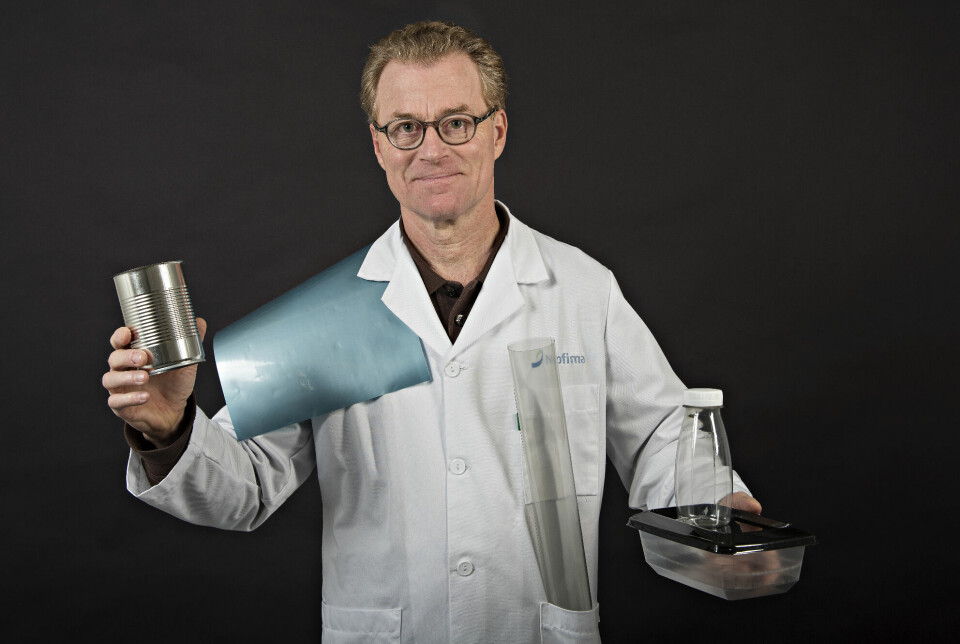
Nofima's tests of food packaging followed international standardized methods based on EU and Norwegian regulations.
The plastics are tested using food simulants, which are food substitutes resembling actual foods. The researchers analyse how much of various substances end up in the food simulant. This is then measured against regulations developed by EFSA, the European Food Safety Authority.
The EU and EFSA have created a ‘positive list’ of all substances that are allowed to be used in plastic that come into contact with food. For some of the substances, a limit has been set for how much of the substance is permitted to transfer to the food product.
“This positive list is what we based our conclusions on. Food packaging is safe, and we are well below the limit values stated for the substances ,” says Haugen.
Standardised tests and limit values
Plastic is often only tested for the presence of known chemicals, according to Wagner. For example, levels for common additives are checked, and if the levels are within what the EU and Norway have defined as safe, then the plastic is deemed safe.
He believes this approach poses at least two challenges.
Plastic contains far more chemicals than manufacturers intentionally add, and the allowable levels, or limit values, are quite high for some substances. The current legislation is too old, Wagner believes.
Haugen from Nofima says their tests do not only look at the known chemicals.
“We don't just look at the additives that the suppliers report having added. We look at all measurable substances that might transfer from the plastic. To the extent that a chemical leaches out, it’s measured. We also find substances that we can’t identify purely chemically,” he says.
Haugen says that they found nothing alarming about the NIAS phenomenon – substances that were not added on purpose.
“What we saw was below the limits – to the extent that they had been assigned values,” he says.
“And if no limit values exist for a substance, then a general conservative limit value applies that is very low.”
Nofima has no opinion on whether the limit values are too high for certain substances, as Wagner claims they are.
“We adhere to EFSA's official regulations, which are the ones that apply in the EU and Norway,” Haugen says.
Calls for better plastic
Norway and Europe have some of the world's strictest regulations for the use of chemicals in plastics.
“So we can assume that our plastic is somewhat safer than in other parts of the world,” says Wagner.
“But when we did this study on plastic packaging from five different countries, we found harmful chemicals in plastic from all the countries. The USA, for example, has completely different and much less regulation, but there was no difference between the plastics from Norway and the USA.”
Another problem is that, although legislation also covers imported plastic products, no one has the capacity to actually follow this up, according to Wagner.
“We find cases of imported plastic packaging that don’t comply with the authorities' regulations,” he says.
Wagner says stricter regulations are not the solution anyway, although they could easily be improved on several points. He’s getting tired of talking about plastic regulations.
“We have enough rules. And at the same time many people are trying hard not to talk so much about all the chemicals that we know nothing about and simply can’t say are safe or not,” he says.
We’re not talking about banning plastic, he emphasises.
“Plastic is a fantastic material! But where is the innovation? We need better plastic that is safer for our health and more sustainable for the environment,” he says.
Reference:
Stevens et al. Plastic Food Packaging from Five Countries Contains Endocrine- and Metabolism-Disrupting Chemicals, Environmental Science & Technology, 2024. DOI: 10.1021/acs.est.3c08250
———
Translation by Ingrid P. Nuse
Read the Norwegian version of this article on forskning.no









